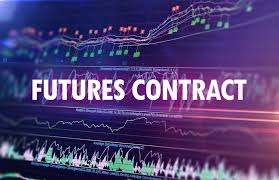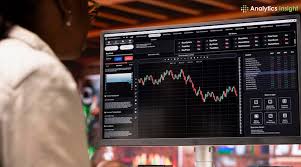Crypto Futures Trading Strategies Maximize Your Profits

Crypto Futures Trading Strategies
In recent years, the cryptocurrency market has gained immense popularity among traders and investors. One of the most exciting aspects of crypto trading is the ability to leverage futures contracts. These financial instruments allow traders to speculate on the future price movements of cryptocurrencies without having to actually own the underlying assets. In this article, we will explore various crypto futures trading strategies visit website strategies for trading crypto futures successfully, ensuring you’re armed with the knowledge needed to navigate this volatile market effectively.
Understanding Crypto Futures
Before diving into strategies, it’s crucial to understand what crypto futures are. A futures contract is an agreement to buy or sell an asset at a predetermined price at a specified future date. In the context of cryptocurrencies, this means you can bet on the price movement of coins like Bitcoin, Ethereum, and many others without actually holding these digital assets. Futures trading can yield significant profits, but it also comes with a higher risk, making it essential to have a well-planned strategy.
Types of Crypto Futures Trading Strategies
1. Hedging
Hedging is a strategy used to protect investments against unfavorable price movements. Traders can open futures contracts to counterbalance any potential losses in their spot trading positions. For instance, if you own 1 Bitcoin and are worried about a price drop, you can sell a futures contract for Bitcoin at the current price. If the price falls, your losses on the Bitcoin you own can be offset by the gains on your futures contract.

2. Speculation
Speculation is about profiting from the price movements of cryptocurrencies. Traders analyze market trends and use technical analysis to make educated guesses on where prices will head. This strategy requires a deep understanding of market dynamics and often involves taking higher risks. Tools such as candlestick charts, moving averages, and indicators can help traders make informed decisions in speculative trading.
3. Trend Following
This strategy is based on the belief that prices tend to move in trends. Traders using this strategy buy when prices are rising and sell when they are falling. They often use various technical indicators to identify trends. Moving averages, trend lines, and the Relative Strength Index (RSI) are popular tools that provide signals for entering and exiting trades based on trends.
4. Arbitrage
Arbitrage involves taking advantage of price discrepancies in the market. In crypto futures trading, this can occur when the price of a cryptocurrency differs between the spot market and the futures market. Traders can buy the asset where it is cheaper and sell it where it is more expensive, pocketing the difference as profit. This strategy requires quick execution and an understanding of market inefficiencies.
5. Grid Trading

Grid trading is a systematic trading strategy that involves placing buy and sell orders at specified intervals around a set price. This method allows traders to capitalize on market volatility by effectively catching price movements as they occur. By establishing a grid of orders, traders can enjoy profits regardless of market direction, provided that the price fluctuates effectively within the grid.
Risk Management in Crypto Futures Trading
While having a solid strategy is essential, risk management is vital for long-term success in crypto futures trading. Here are some key risk management techniques:
- Stop-Loss Orders: Always set stop-loss orders to minimize potential losses. This automated order helps exit a position at your predetermined loss percentage.
- Position Sizing: Determine how much capital to allocate for each trade based on your overall trading account size and risk tolerance. Never risk more than a small percentage of your capital on a single trade.
- Diversification: Don’t put all your eggs in one basket. Diversify your portfolio across different cryptocurrencies and other asset classes to spread risk.
- Regular Review: Periodically review your trading strategy and performance. Adapt to changing market conditions and refine your approach.
The Role of Market Analysis
To make informed decisions in futures trading, understanding both fundamental and technical analysis is essential.
- Fundamental Analysis: This involves assessing factors that influence the value of cryptocurrencies, such as regulations, technological advancements, and market demand.
- Technical Analysis: Focuses on analyzing statistical trends from trading activity, such as price movement and volume, to forecast future price movements.
Conclusion
Crypto futures trading can be lucrative if approached with the right strategies and a solid understanding of risk management. As the market continues to evolve, staying informed and adapting your strategies will be key to navigating these waters successfully. Whether you are hedging, speculating, or employing more advanced strategies like grid trading, the future of crypto trading holds many opportunities for those willing to learn and adapt. Always remember that with great potential rewards come greater risks, so educate yourself thoroughly and trade responsibly.

